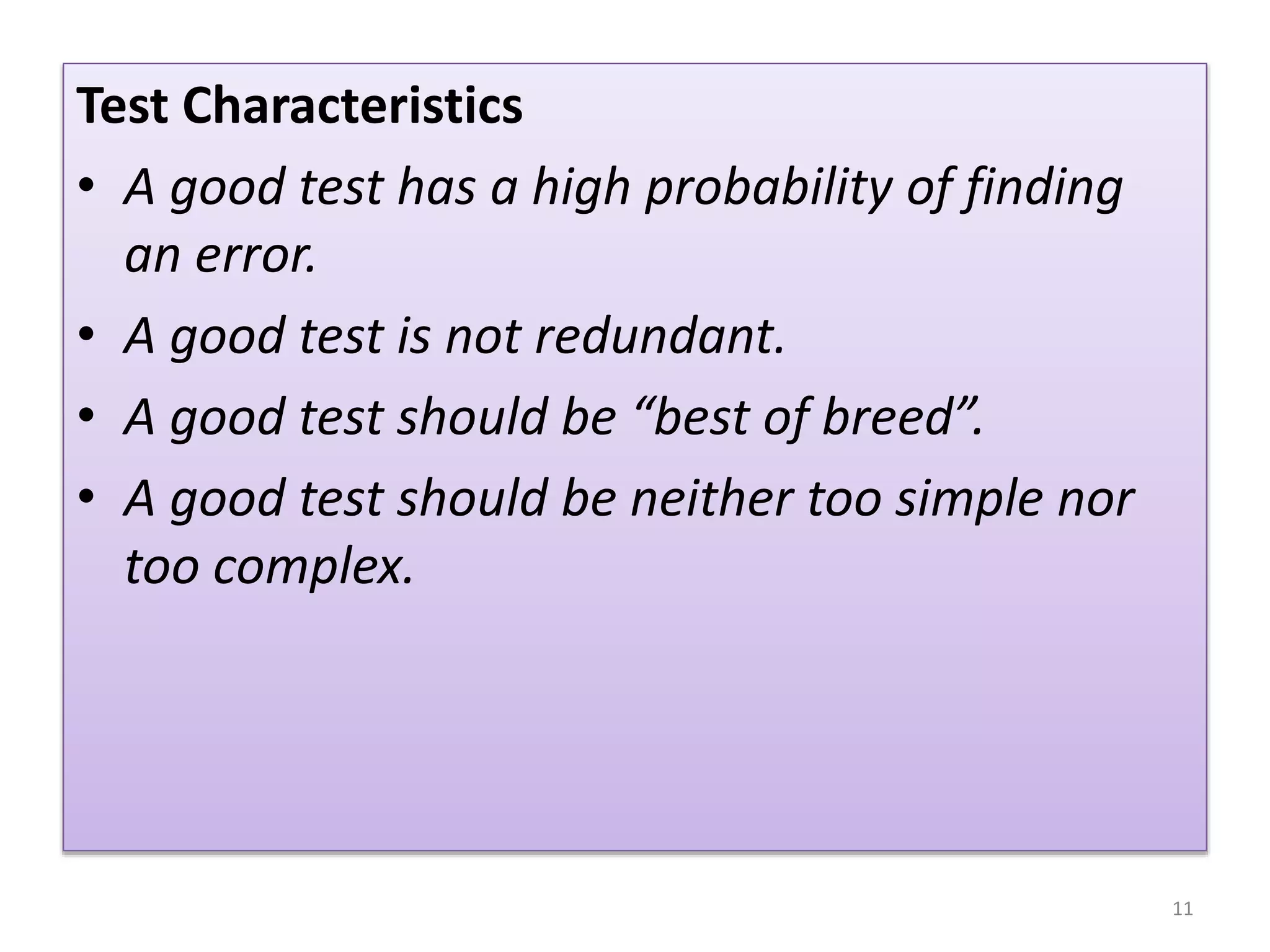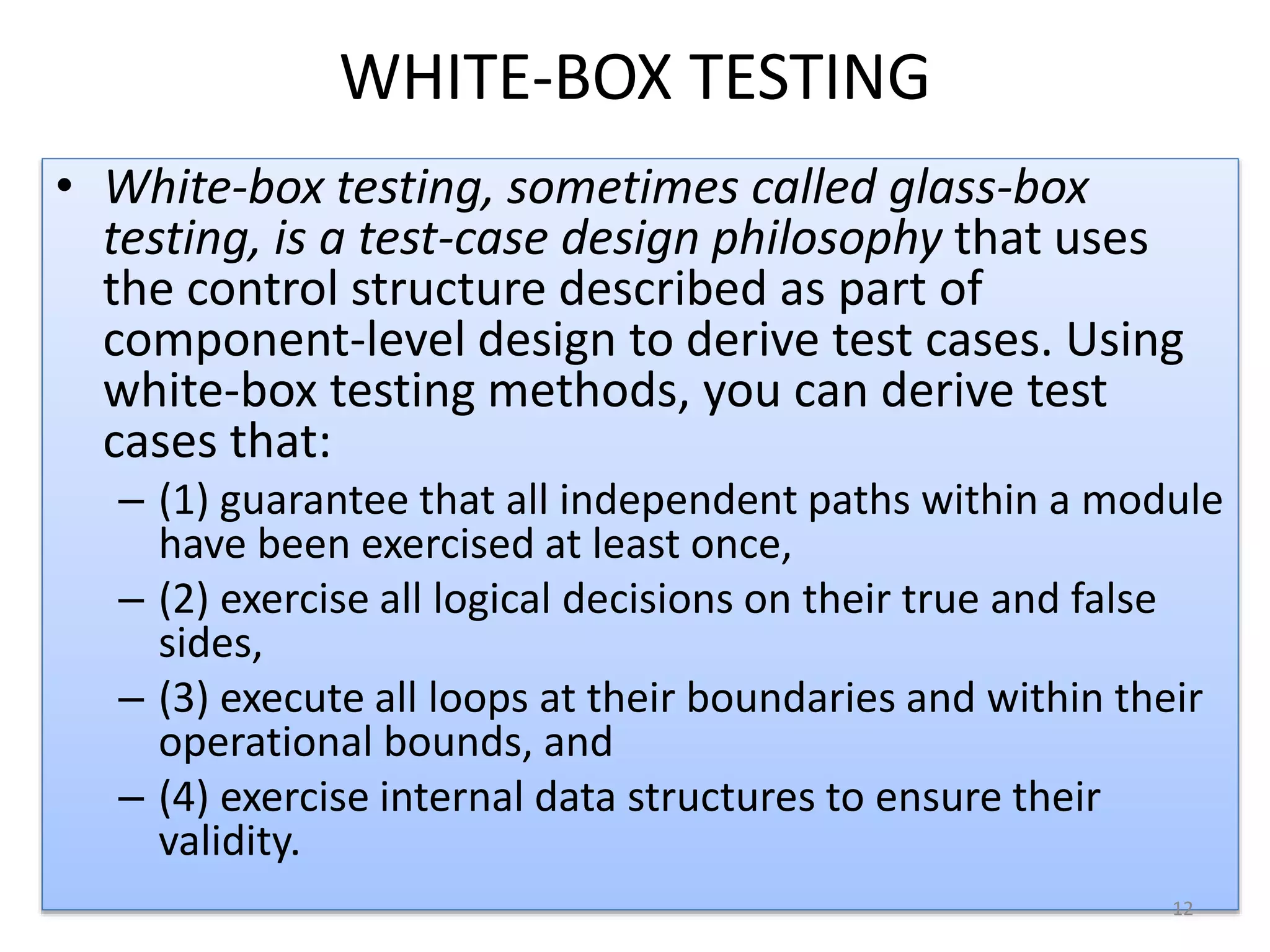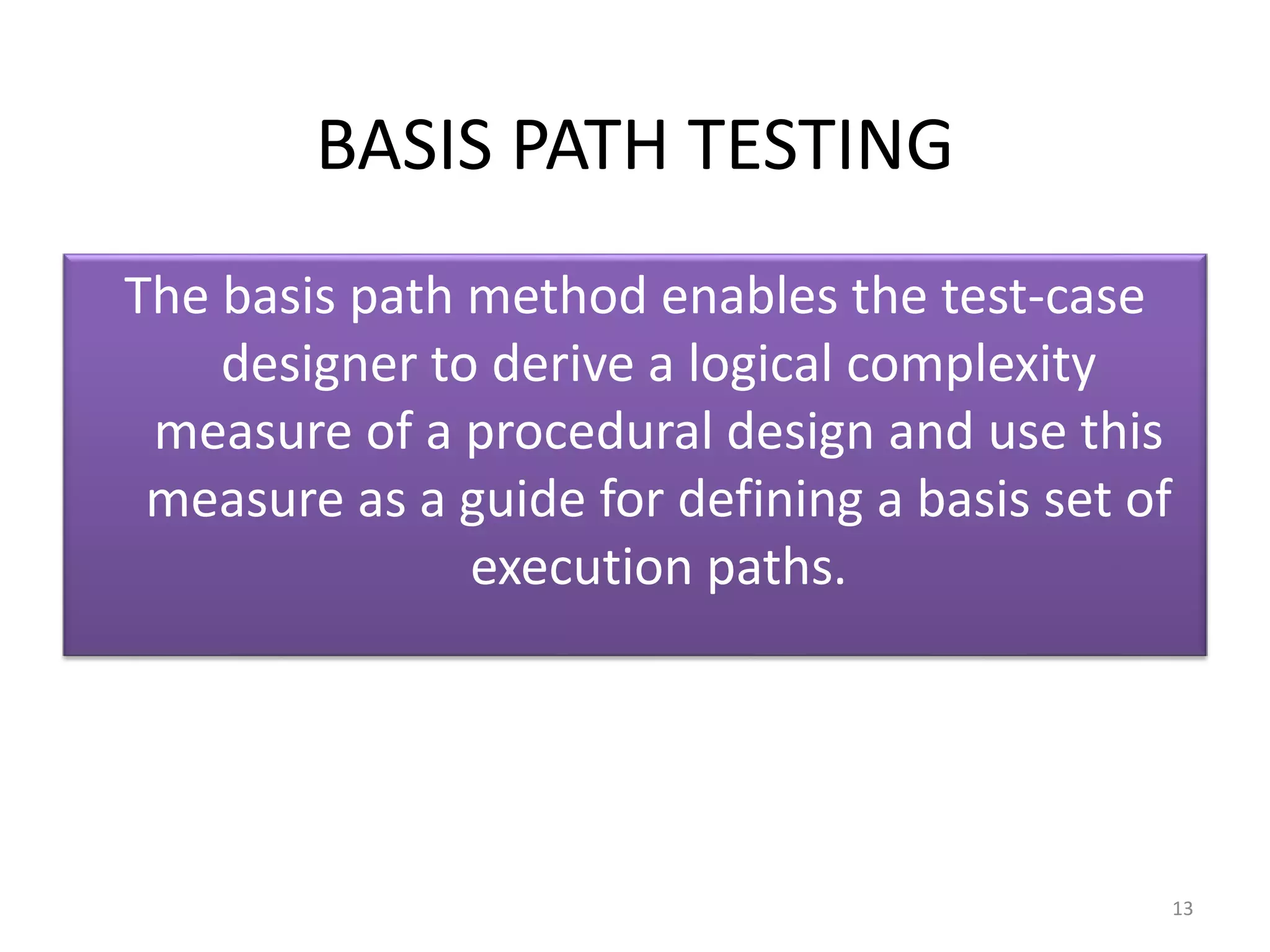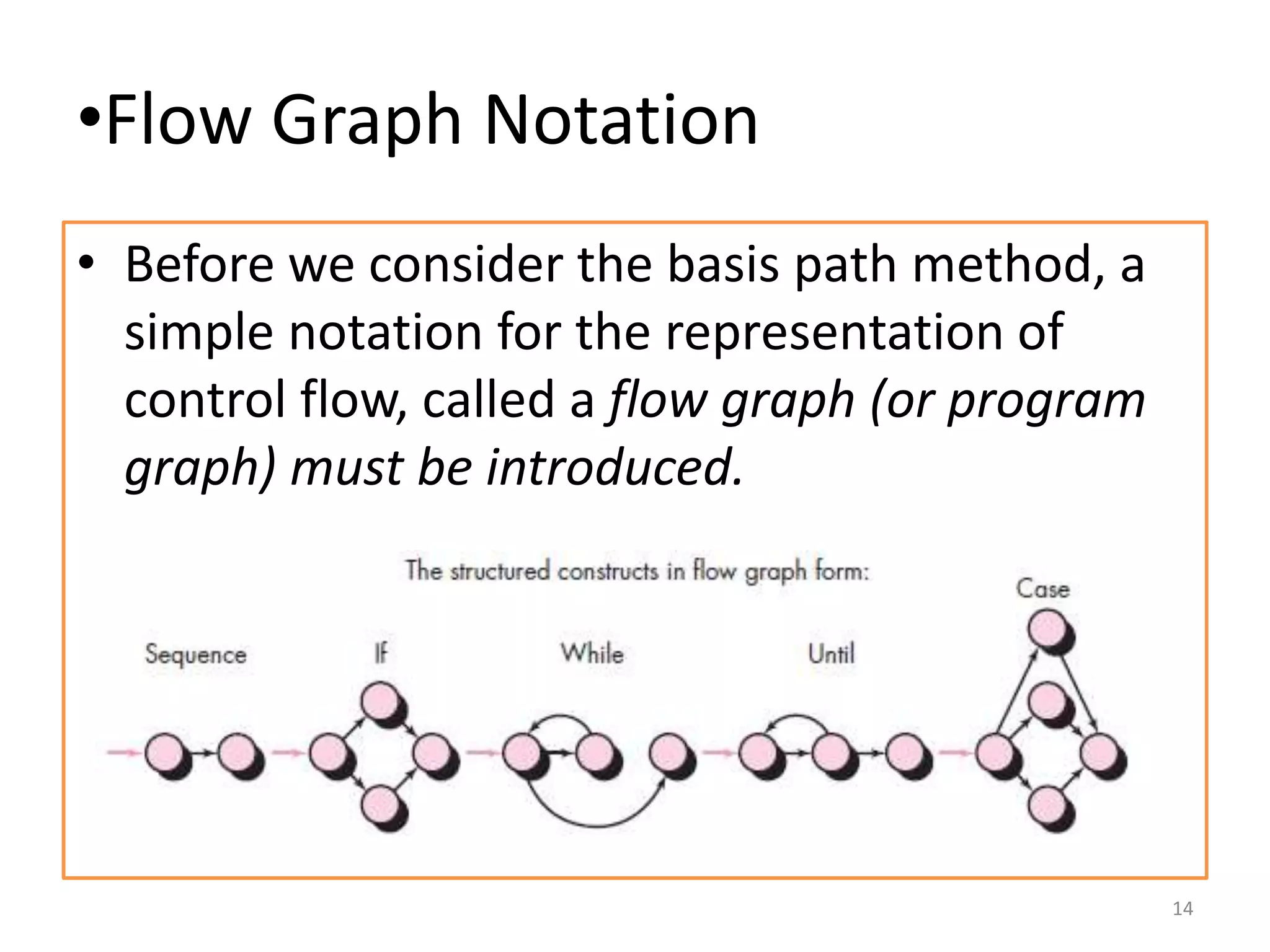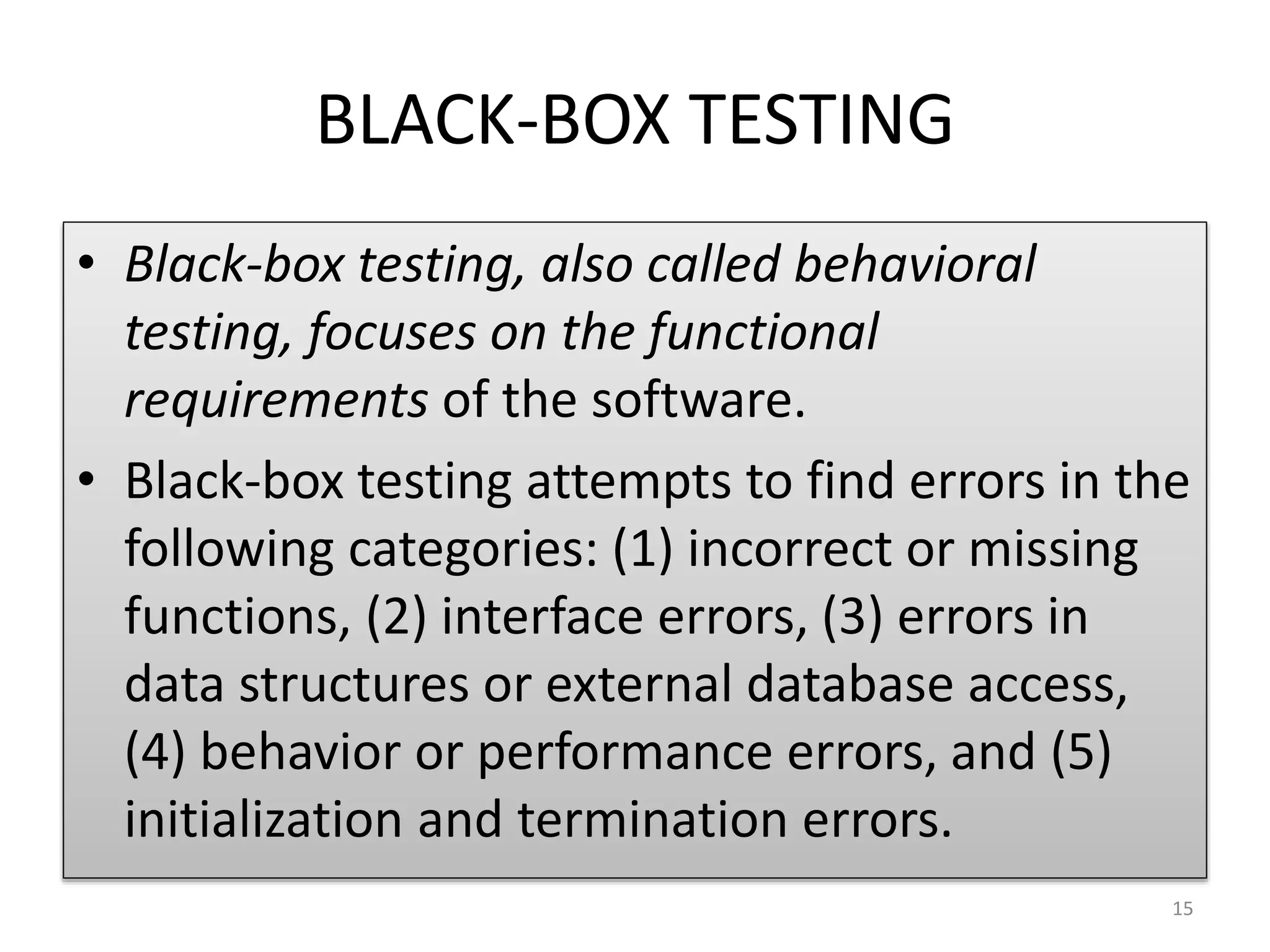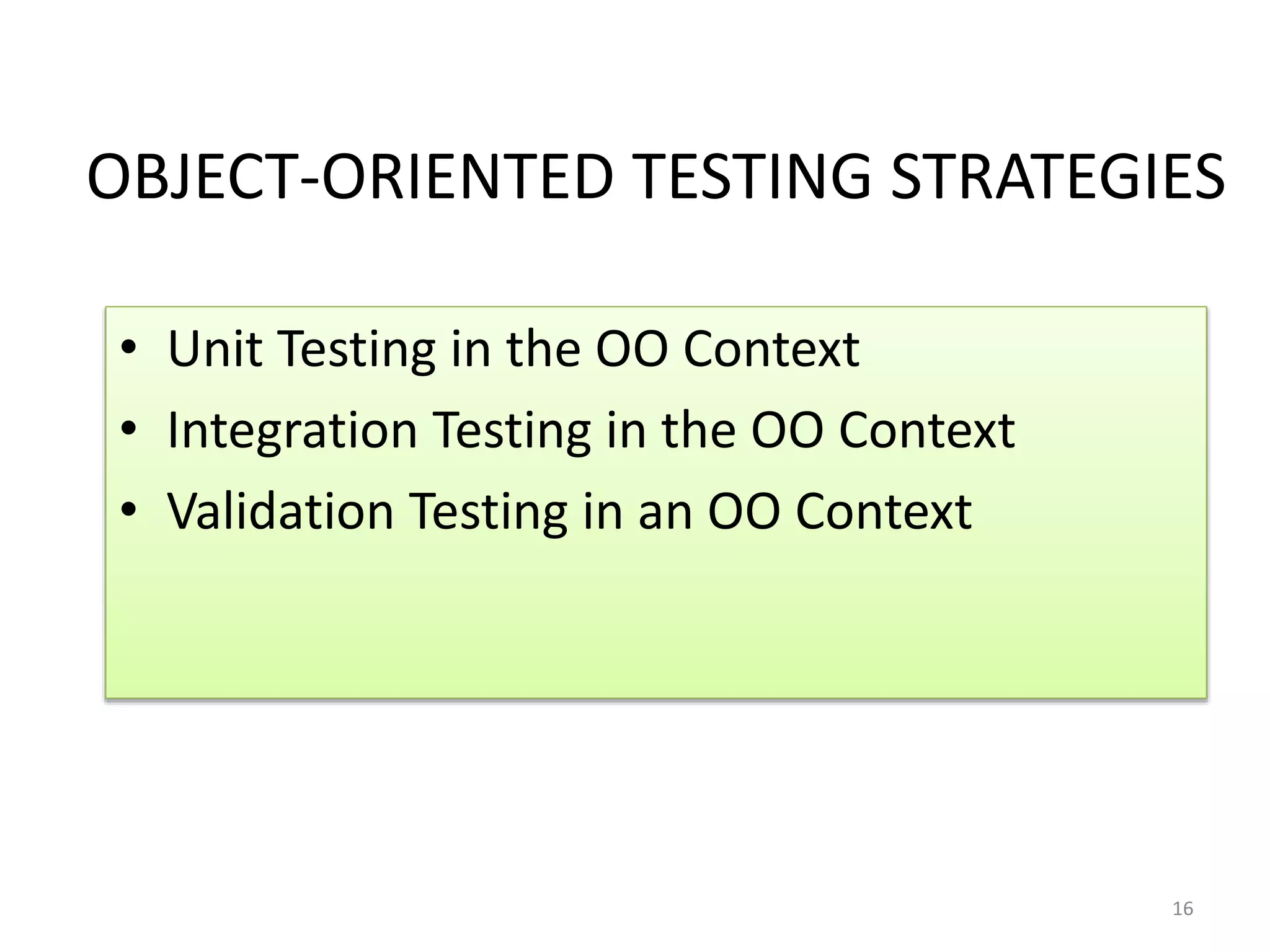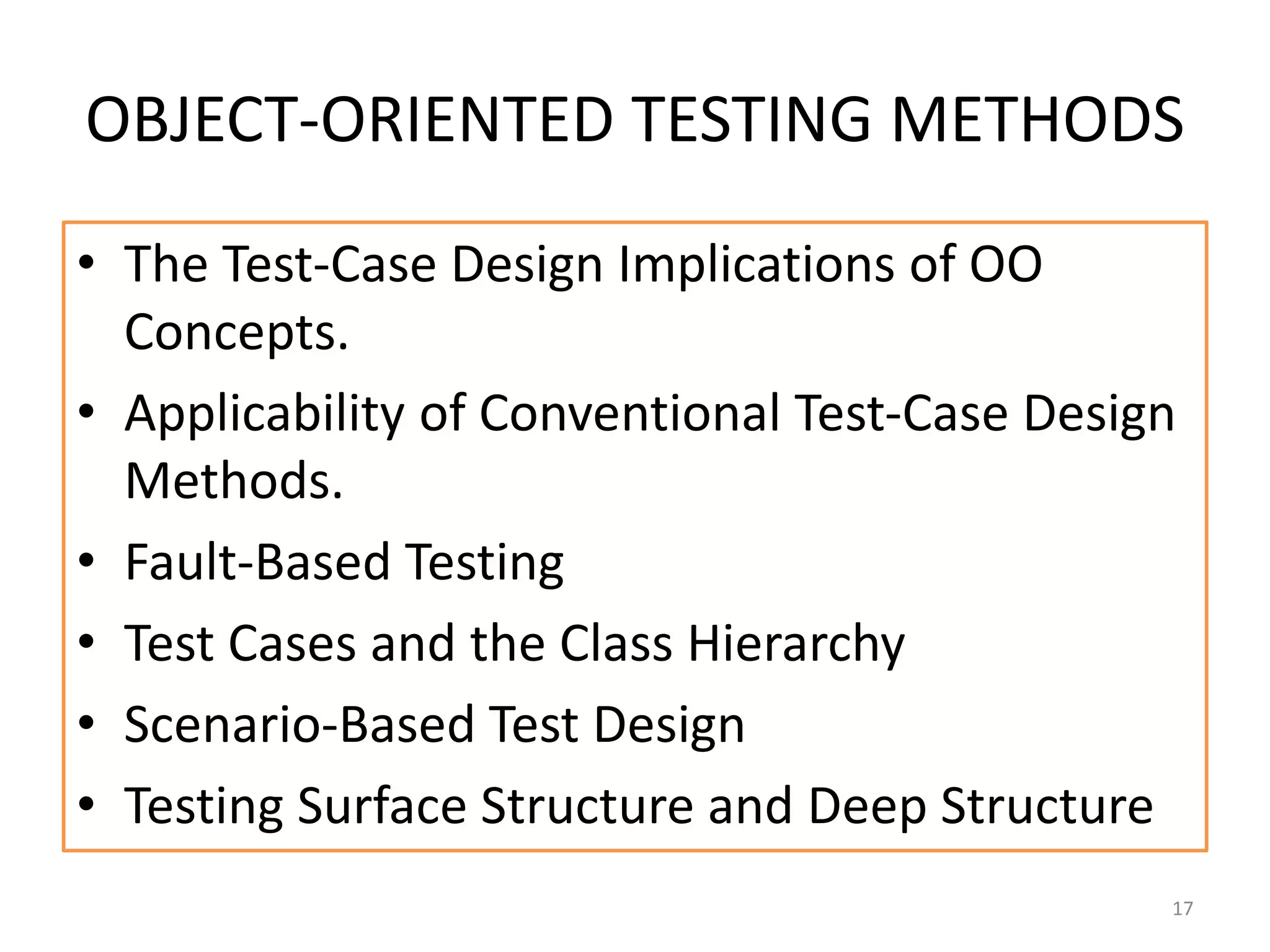The document outlines various software testing methods including system, recovery, security, stress, performance, and deployment testing. It emphasizes the significance of debugging strategies, software testability traits, and two testing philosophies: white-box and black-box testing. Additionally, it discusses object-oriented testing approaches and the importance of addressing potential software errors through effective test-case design.
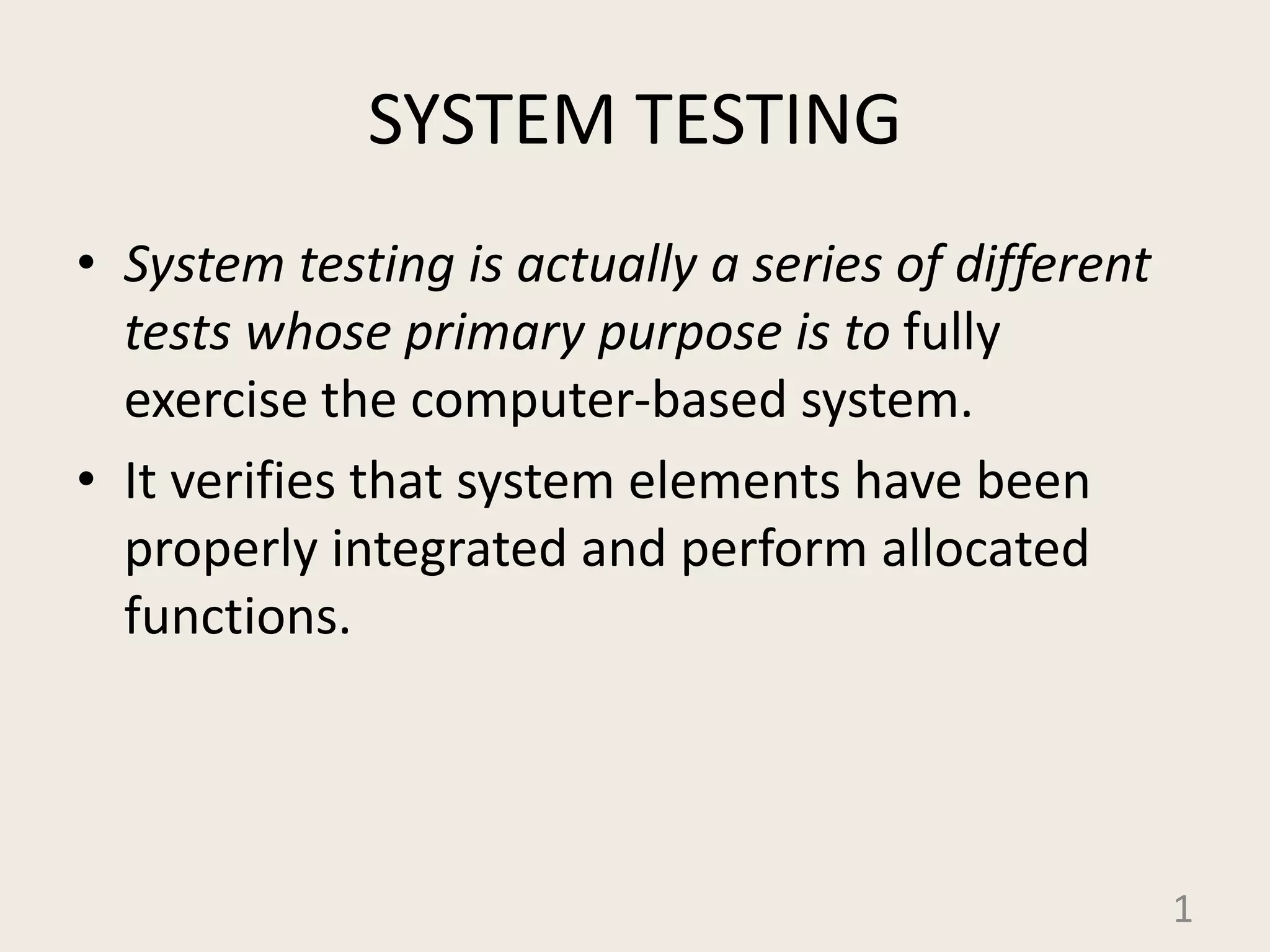
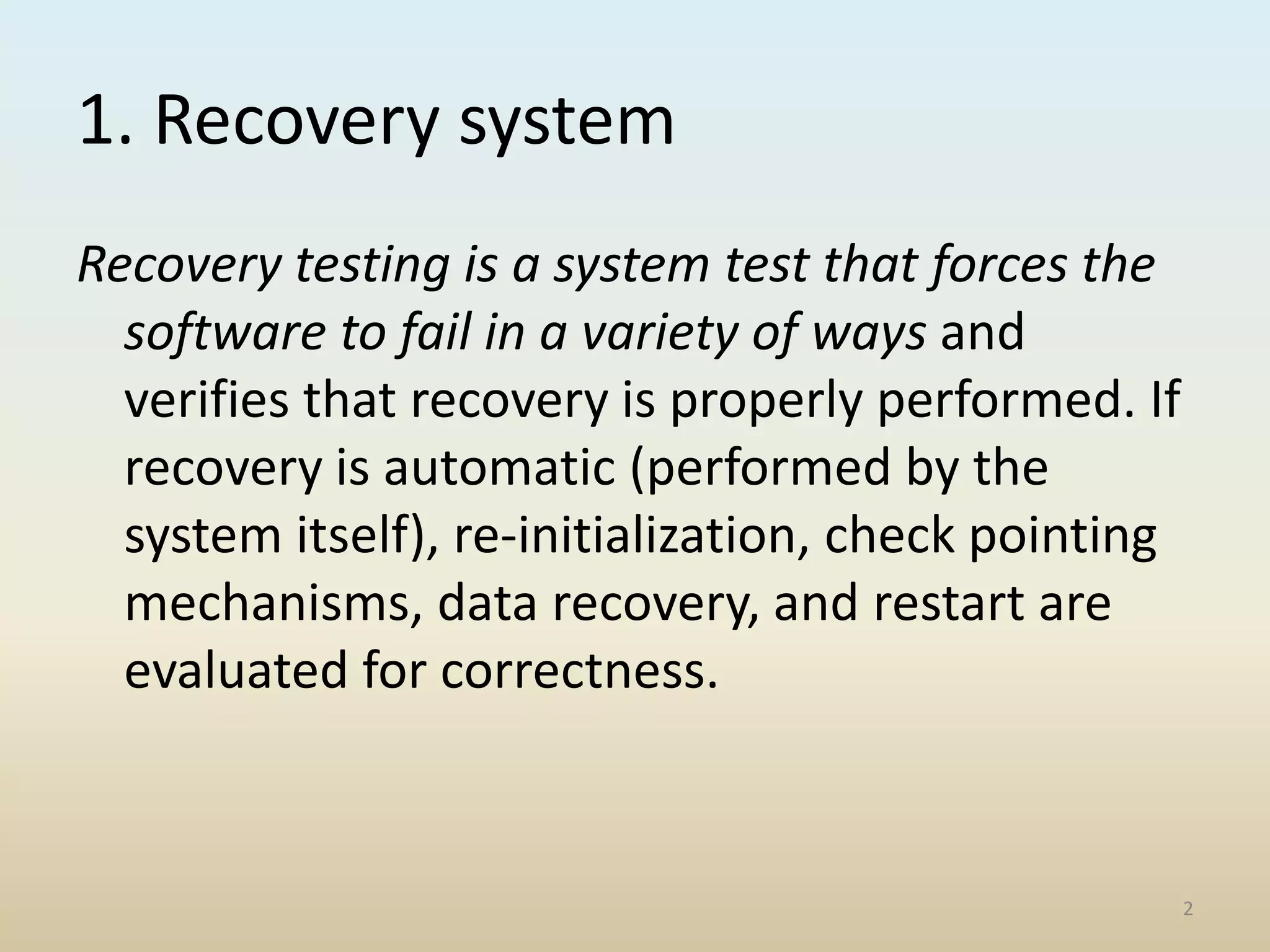
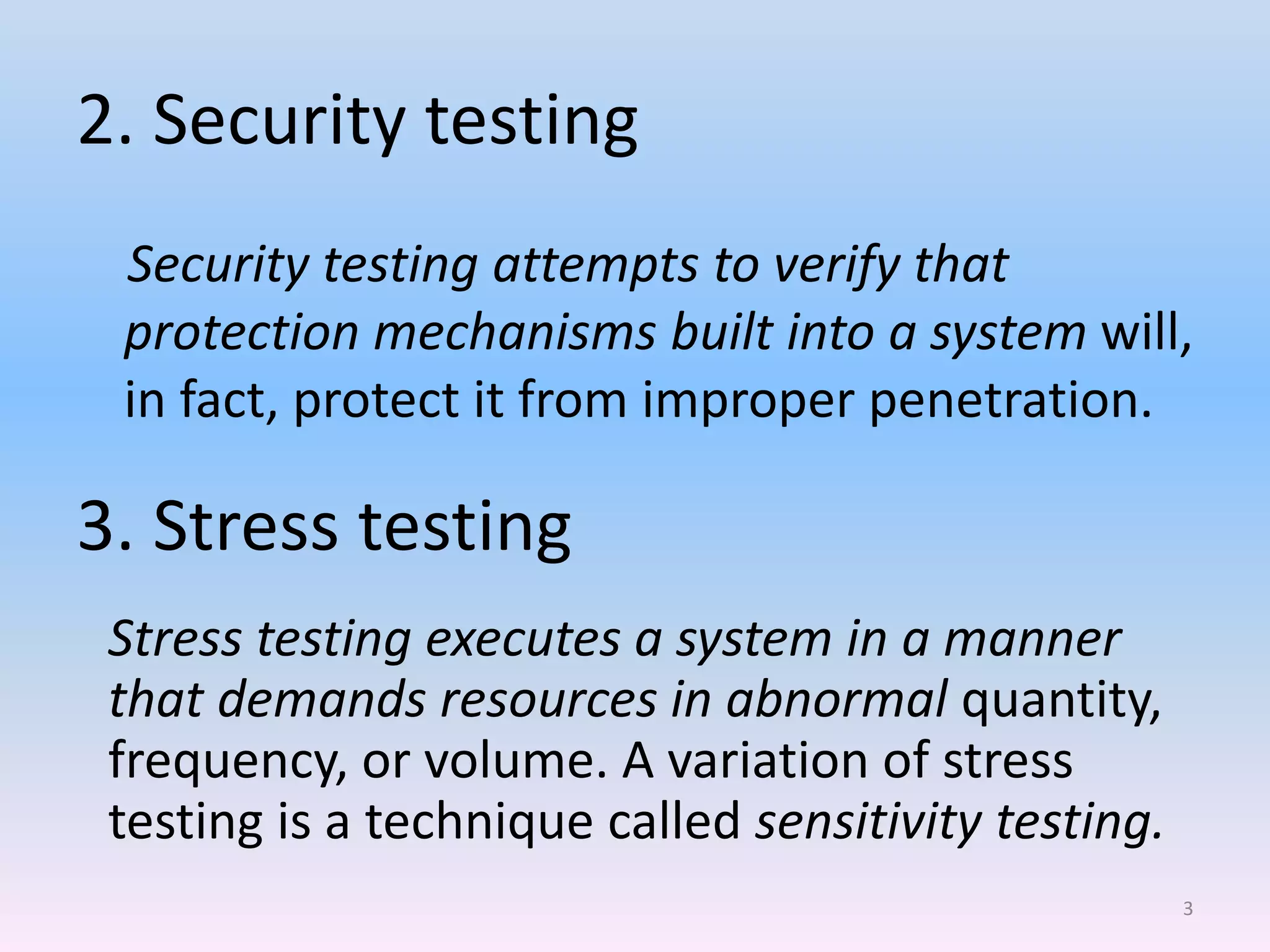

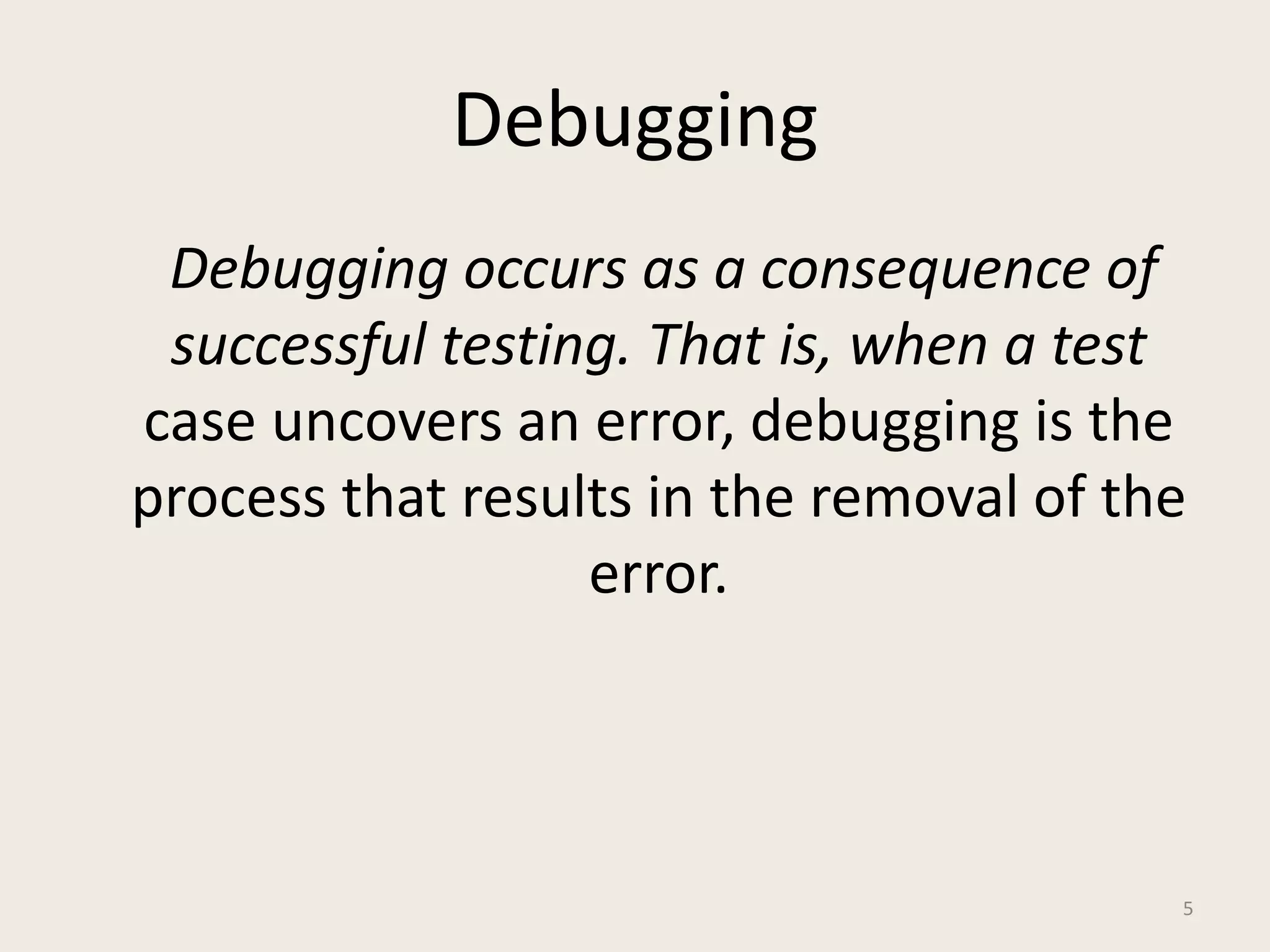
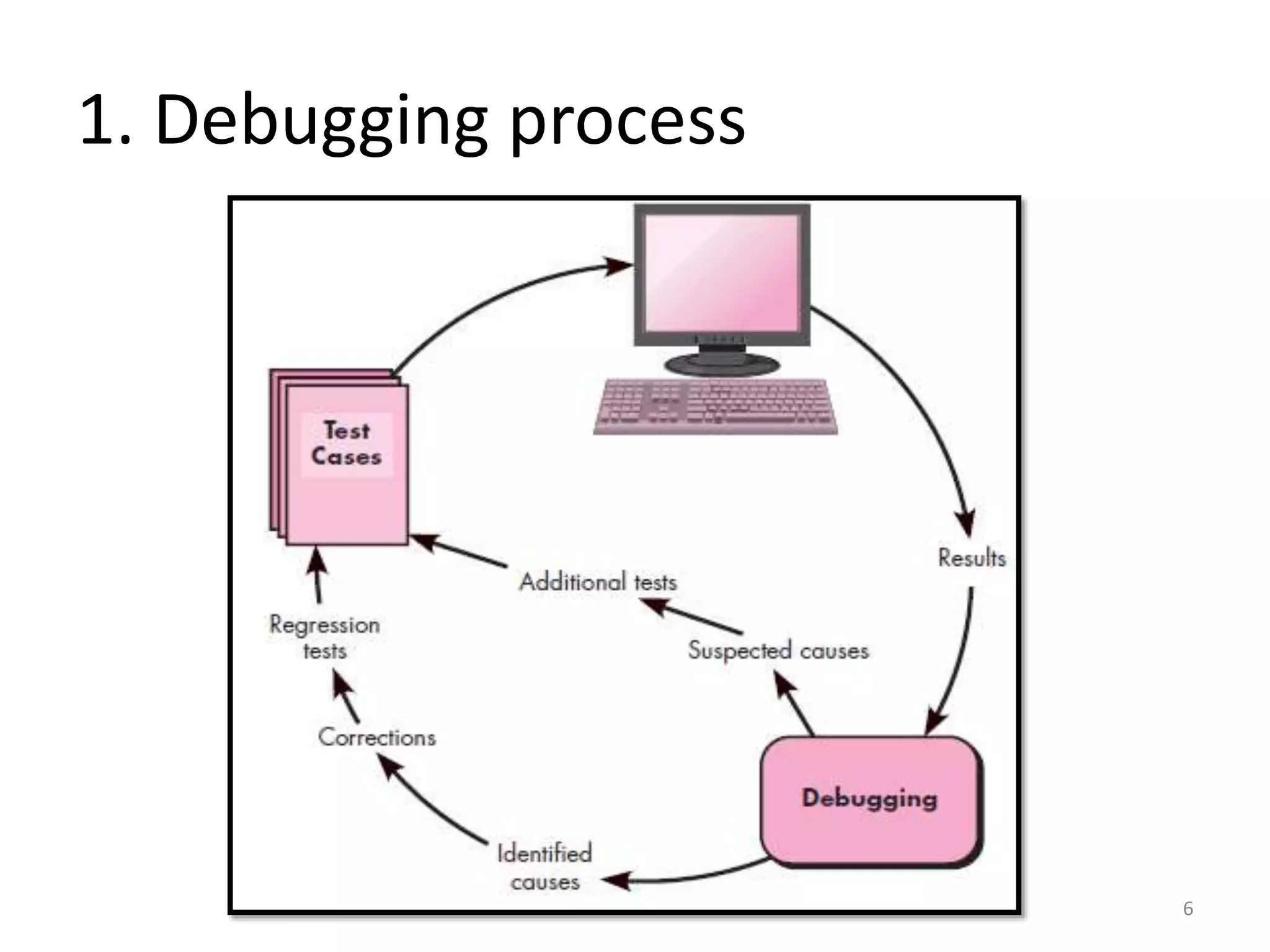
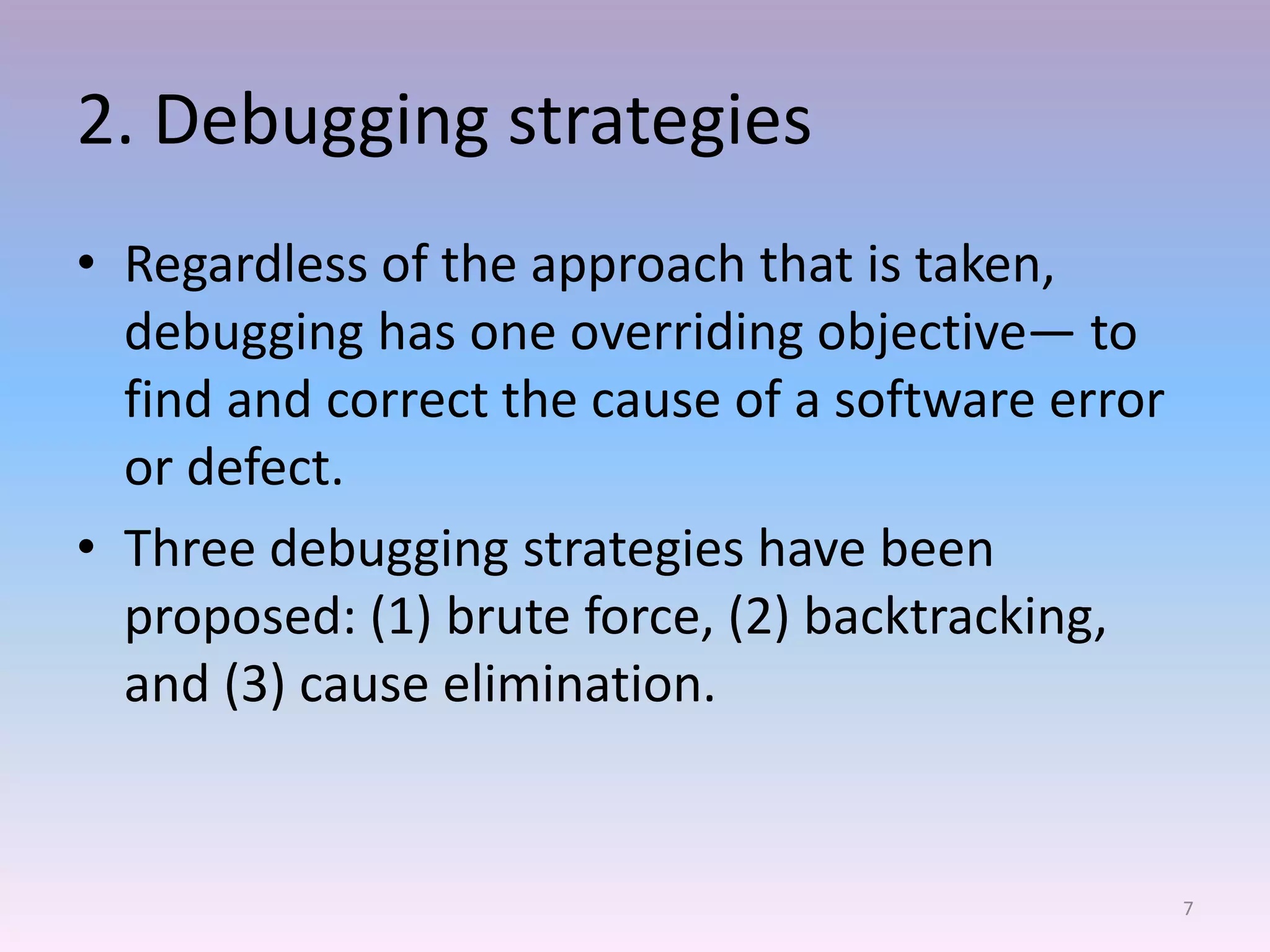
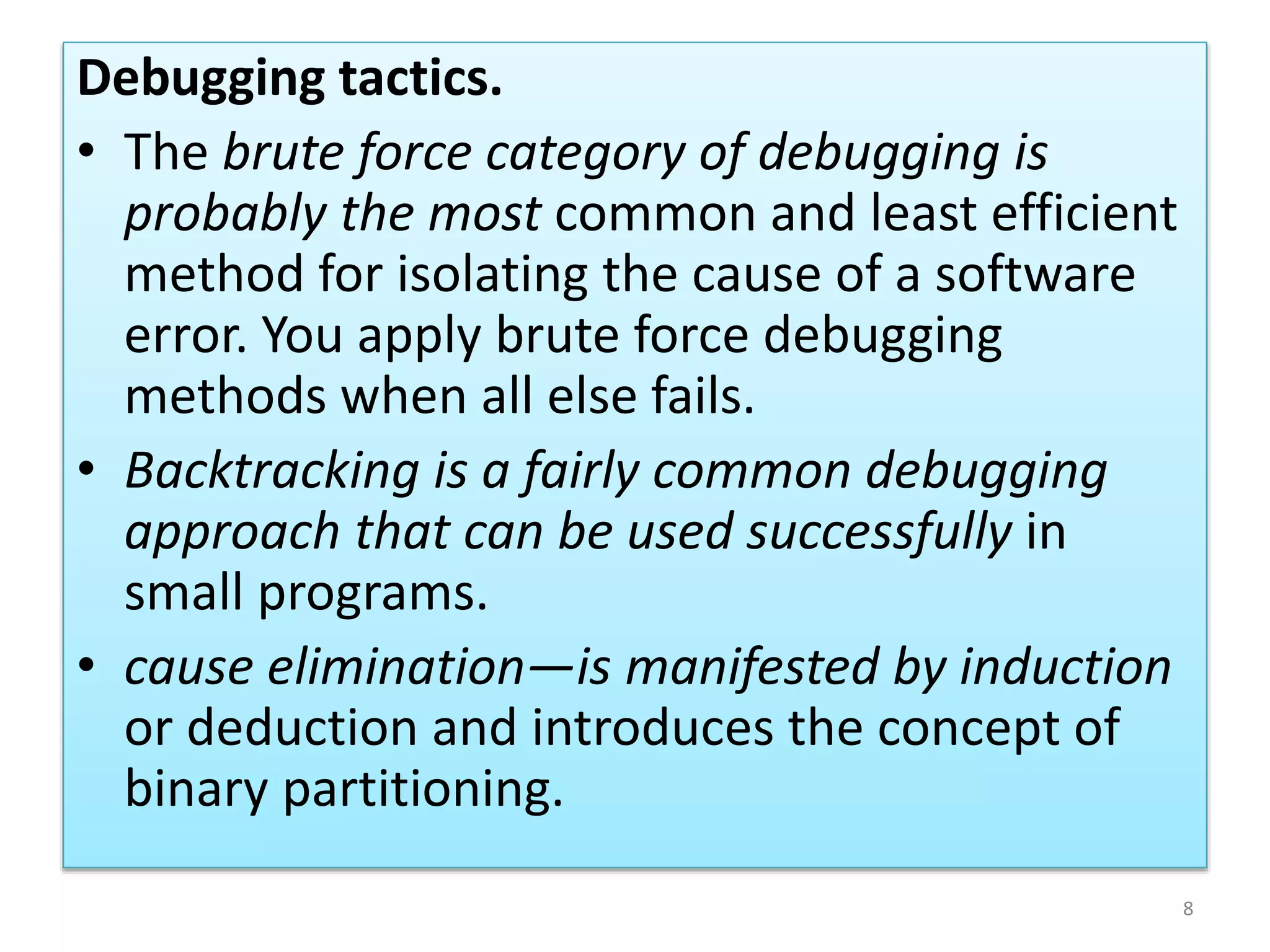
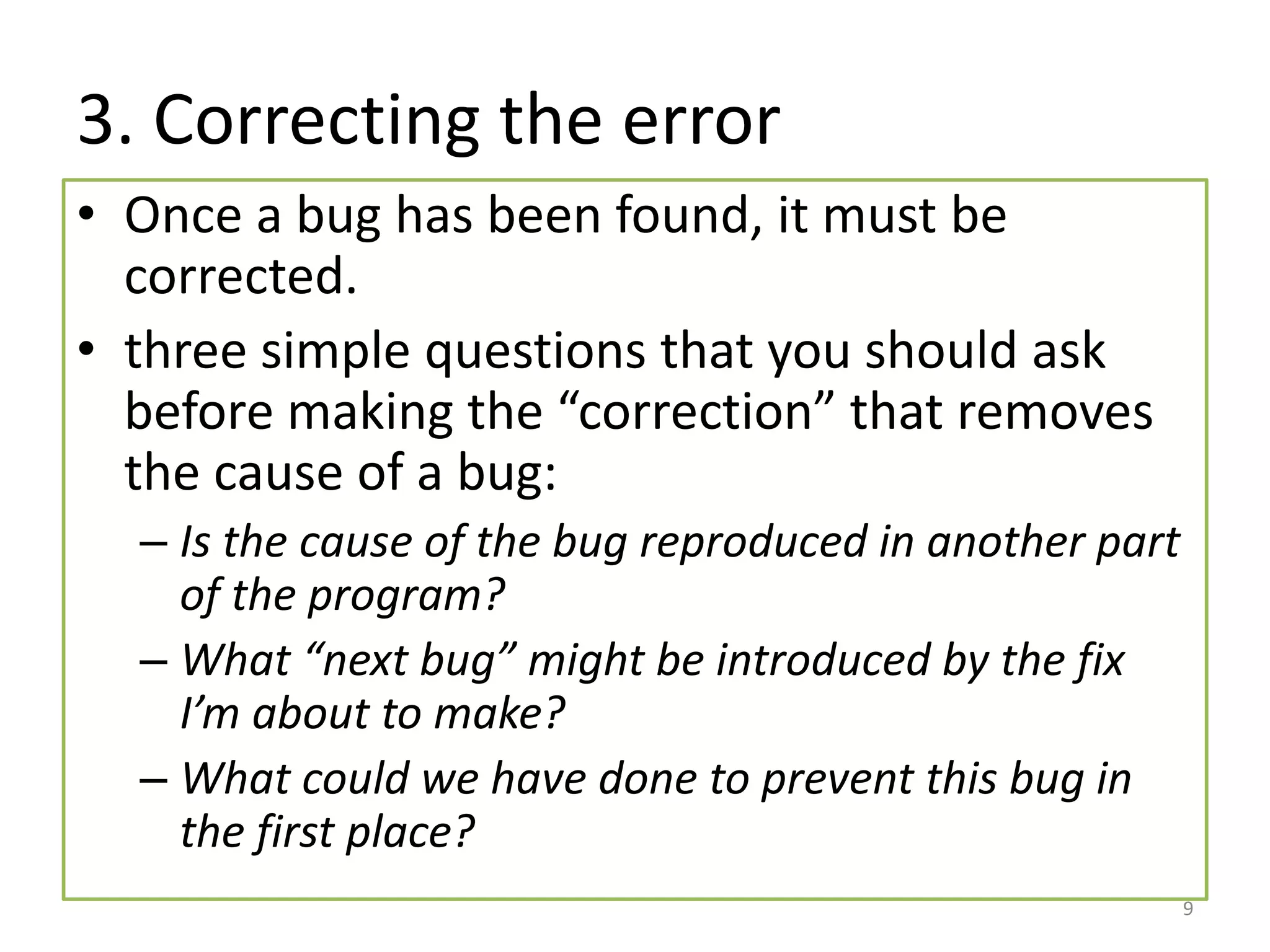
![SOFTWARE TESTING FUNDAMENTALS
Testability
• “Software testability is simply how easily [a
computer program] can be tested.” The following
characteristics lead to testable software:
– Operability
– Observability
– Controllability
– Decomposability
– Simplicity
– Stability
– Understandability
10](https://image.slidesharecdn.com/testing-200424153608/75/types-of-testing-in-software-engineering-10-2048.jpg)
